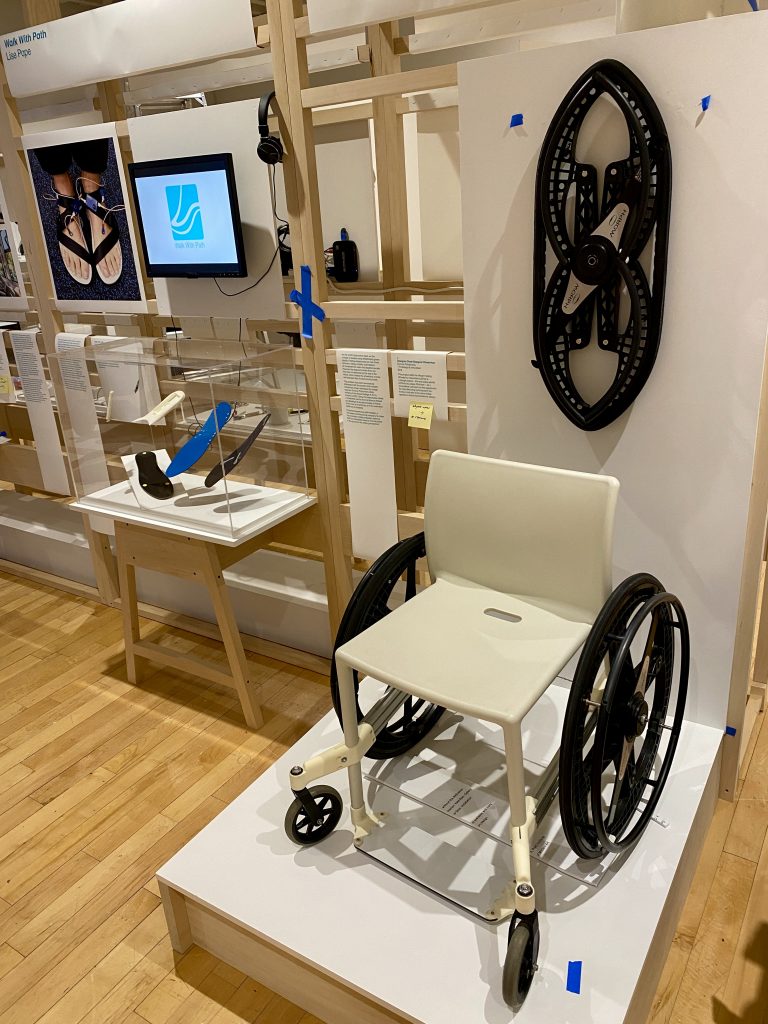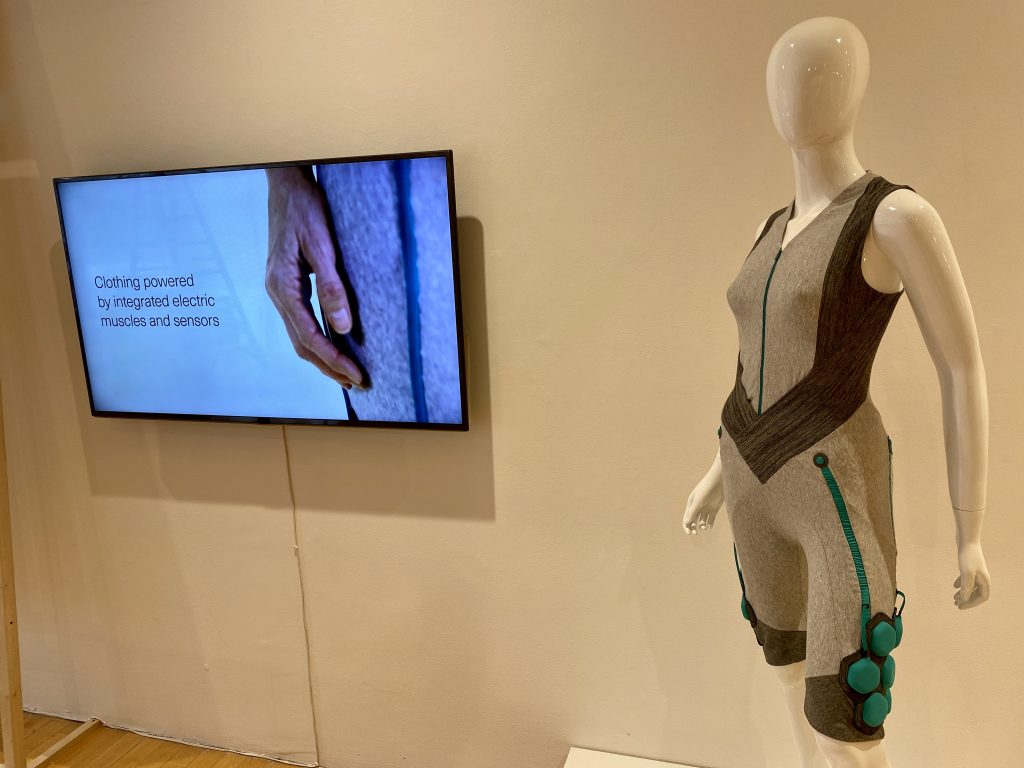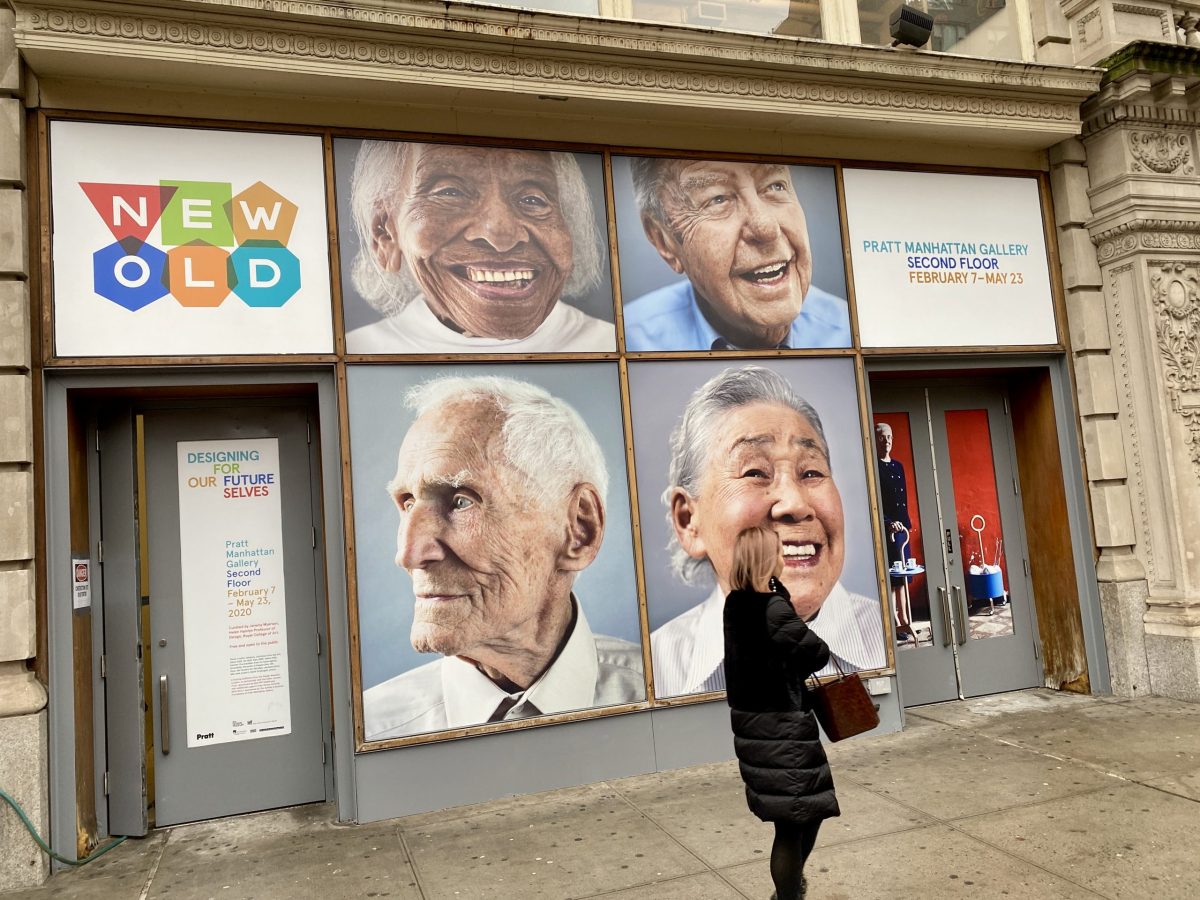A new Manhattan exhibit features innovative technologies and gadgets from designers who imagine what advances can be made in how older people live.
The show opened Feb. 7 at the Pratt Institute’s Manhattan gallery, 144 West 14th St., and is called “New Old: Designing for our Future Selves.”
“It’s trying to reimagine what older age can be,” said curator Jeremy Myerson, the Helen Hamlyn Chair of Design at Royal College of Art in London.
The show is a touring exhibition from the Design Museum, London, where it debuted in 2017, and has also traveled to Poland and Taiwan.
About 95 million Americans will be over 65 years old by the middle of this century, Myerson noted, making it an important question to look at how life in older age can improve and evolve in society.
“The potential is there to do exciting things,” Myerson said, “and it’s a philosophical question of what we want from longer life.”
The exhibition has six themes, including aging, identity, home, community, working and mobility. Each section involves a special commission from a leading design team around the world, Myerson said.
Items include a self-driving shuttle for transport, a scooter that can adapt to different uses over a person’s lifetime, a wheelchair with folding wheels for better mobility, and a “Powered Suit” which uses motors, sensors and artificial intelligence to help with muscle movement and stability.
“It’s showing what advanced material and AI can do,” said Myerson of the suit.


Myerson said he re-curated the show for an American audience, adding five projects from Pratt faculty, including a shaver that allows for the shaving of another person. And the demographics and statistics in the exhibit are geared toward facts about aging in America.
Other items include a robot dog and a smart home system that includes appliances in an “intelligent wall” and a washing machine that washes and irons clothes itself.
Part of the goal is exploring how to remove any stigma of products being just for old people. “We’re suggesting products and services that are inclusive, that people can share across generations,” Myerson said.
Another section looks at the impact of the book “Disguised,” by Pat Moore, which came out 40 years ago and revealed lessons learned by the author while disguised as an older person in society.
“She was one of the pioneers in America who drew attention to how older people are excluded and stigmatized,” Myerson said.
In its various locations so far, the show has received over 100,000 visitors, Myerson said, and feedback has revealed that younger people tend to be more open than older people to having more technology at the expense of privacy.
“The most interesting debates are around the robots and the house,” Myerson said, “and how much are you willing to let technology take over the intimate care functions?”
Myerson said he hoped a lot of people would see the show during its run at the Pratt Institute, including lots of students.
“We’re going to need a lot more designers thinking about older age,” Myerson said. “There’s a lot of opportunity in the field, we just need the best brains thinking about it.”
The exhibition runs until May 23 and is free to the public. More information can be found at pratt.edu/exhibitions.




































